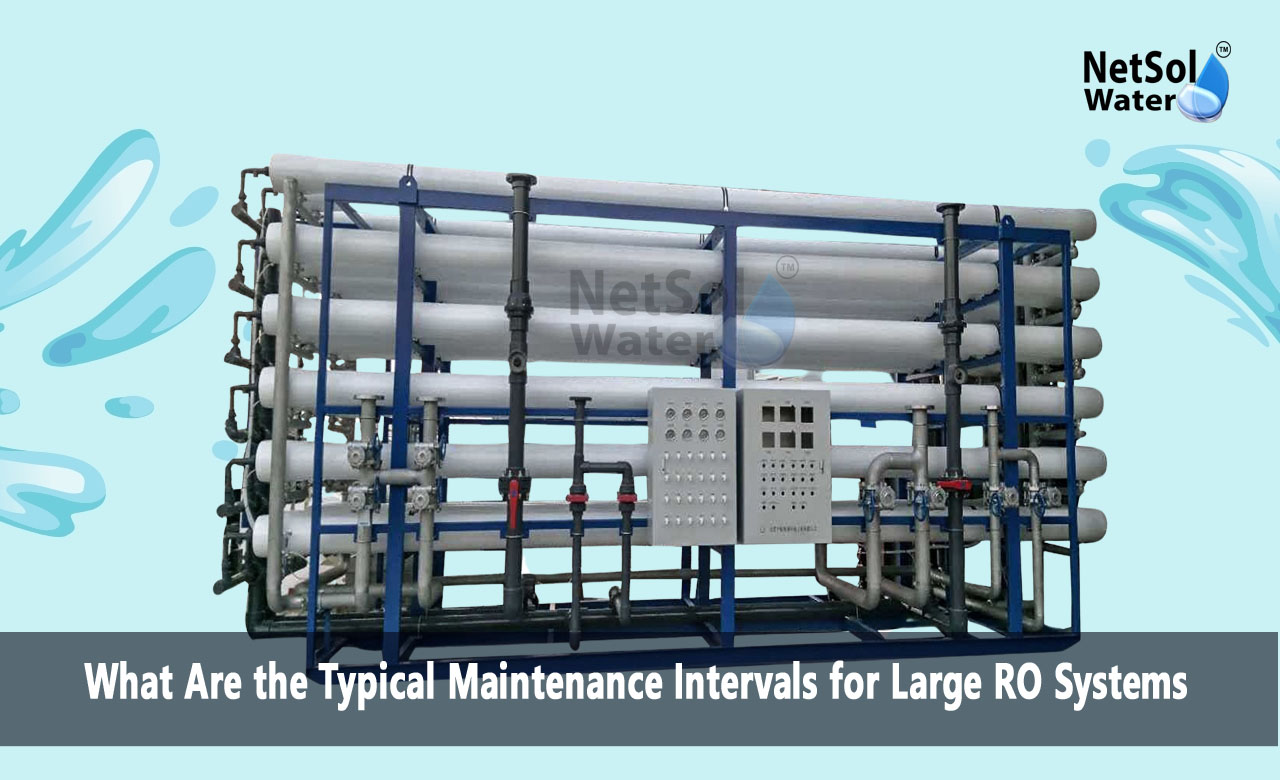What Are the Typical Maintenance Intervals for Large RO Systems?
Netsol Water stands at the forefront of water treatment solutions as a leading manufacturer of large reverse osmosis plants. Care and planning keep these systems running at peak performance. Understanding typical maintenance intervals for large RO plants helps plant managers plan work schedules. It ensures equipment lasts longer. It reduces downtime and cuts costs. Netsol Water has guided clients in all industries to set up sound maintenance plans. This overview shows why regular checks and services matter for system health. It highlights how structured upkeep can extend membrane life and keep flow rates steady. By following clear intervals facilities can avoid sudden failures. They can improve water quality and ensure reliable supply.
Membrane Cleaning Schedule
Membrane health makes or breaks system efficiency and water purity. Proper cleaning removes fouling and restores flow. Let us have a look at some essential points to keep membranes in good shape.
Monthly Performance Check
You should track permeate flow and salt rejection every month. This step shows early signs of membrane fouling. If flow drops or salt passage rises you may need extra cleaning.
Quarterly Chemical Cleaning
Every three months you should run a chemical wash cycle. This process uses safe cleaning agents under controlled pressure. It breaks down scale and biofilm. After cleaning you restore membrane performance and extend its lifespan.
Annual Deep Clean
Once a year you should perform a full system shutdown for detailed cleaning. Remove and inspect each membrane element. Use stronger cleaning agents under expert supervision. This level of care resets system health and prevents long term damage.
Read: Commercial RO Plant Manufacturer
Filter Replacement Timeline
Filters protect RO membranes by trapping sediment and chlorine. Keeping them fresh reduces strain on the core system. Let us have a look at some key filter changes.
Monthly Pre Filter Check
Inspect sediment filters every month for pressure drop. High pressure loss indicates clogging. When you see drop you swap filters right away to shield membranes.
Biannual Carbon Filter Swap
You should change activated carbon filters every six months. This step removes chlorine and organic matter. It prevents chemical damage to the membranes and stops taste or odour issues.
Annual Filter Housing Service
Once each year you should open housings and clean them thoroughly. Check O rings and seals for wear. Replace any parts that show damage. This care stops leaks and keeps system tight.
Pump and Motor Maintenance
Pumps drive water through the RO plants under high pressure. Keeping them in good condition avoids system downtime. Let us have a look at some service steps.
Monthly Vibration and Noise Audit
Listen to pump operation each month. Feel the housing for hot spots. Any new vibration points to misalignment or bearing wear. Catching this early prevents bigger failures.
Quarterly Lubrication
Every quarter add lubricant to motor bearings and moving parts. Use only approved grades. This measure reduces friction and extends pump life.
Annual Overhaul
Once a year you should strip down the pump. Inspect impellers and shafts for wear. Replace worn parts and test motor windings. Full service ensures reliable pressure delivery.
Sensor Calibration Intervals
Accurate sensors help monitor water quality and system health. You must keep them calibrated. Let us have a look at some calibration steps.
Monthly Quick Check
You can perform a simple check of pH and conductivity sensors against standard solutions. If values shift you note adjustments.
Semiannual Full Calibration
Twice a year send sensors for full calibration at a certified lab. Or use onsite calibration kits for precision. This process keeps readings accurate and prevents process drift.
Annual Replacement
Each year you should replace sensors that have reached end of life. New sensors give more stable readings. They avoid false alarms or missed warnings.
System Inspection Routine
A complete system audit can reveal hidden issues before they escalate. Let us have a look at some inspection tasks.
Monthly Visual Survey
Walk along system piping and fittings every month. Look for leaks or corrosion. Spotting small issues stops them from growing into major repairs.
Quarterly Control Panel Check
You should test alarms and controllers each quarter. Ensure firmware updates have installed correctly. This step keeps automation reliable and secure.
Annual Structural Review
Once a year a certified engineer should inspect frame and supports. Check for metal fatigue or stress points. Structural soundness underpins safe operation.
Conclusion
Understanding typical maintenance intervals for large RO plants helps you plan precise work schedules and cut costs. Netsol Water has proven expertise in designing and supporting RO systems for all scales of need. If you need more details on these maintenance plans or wish to set up a consultation please get in touch with our experts today. We will help you secure reliable service and extend system life.
Contact Netsol Water at:
Phone: +91-9650608473, Email: enquiry@netsolwater.com



